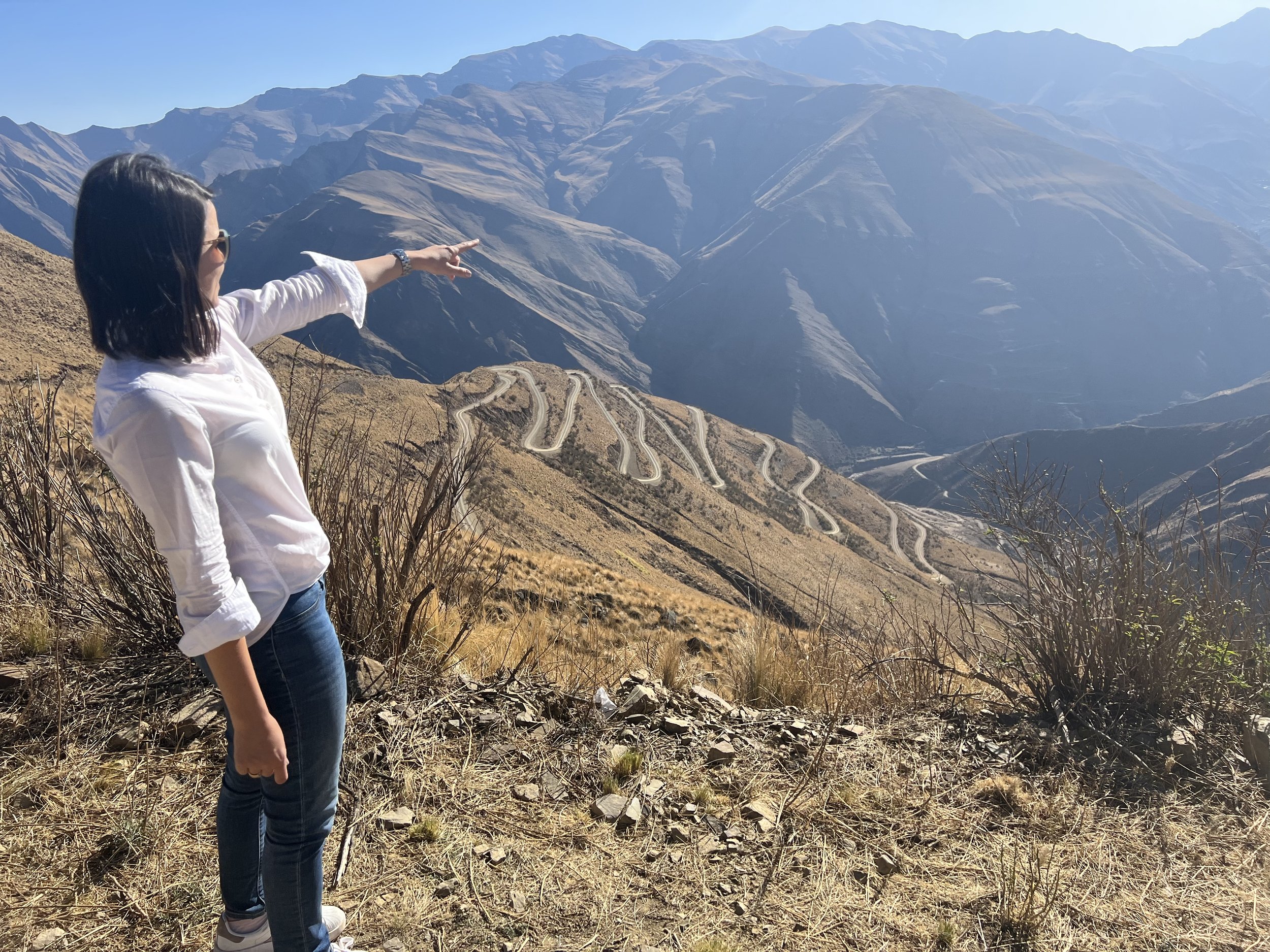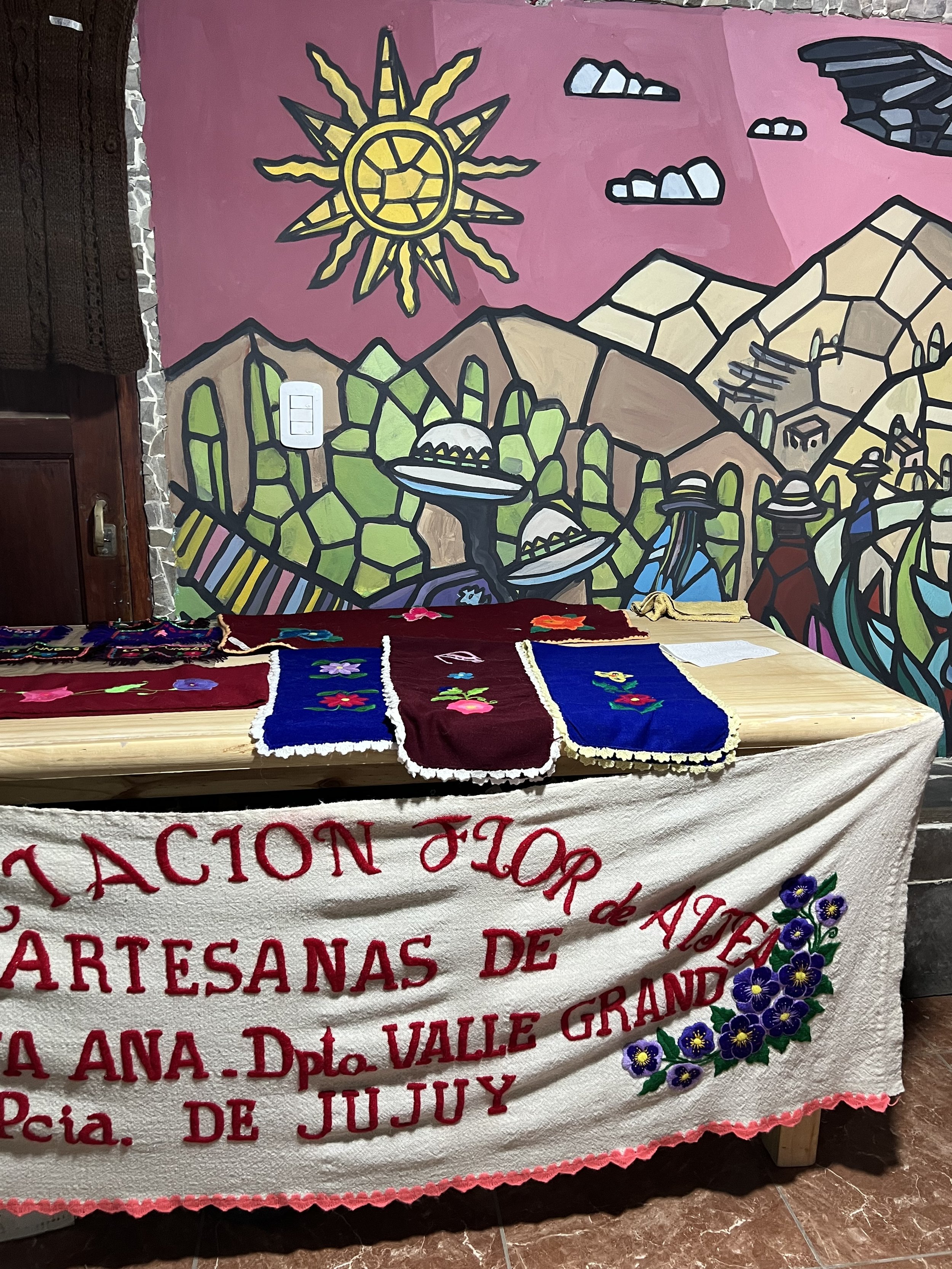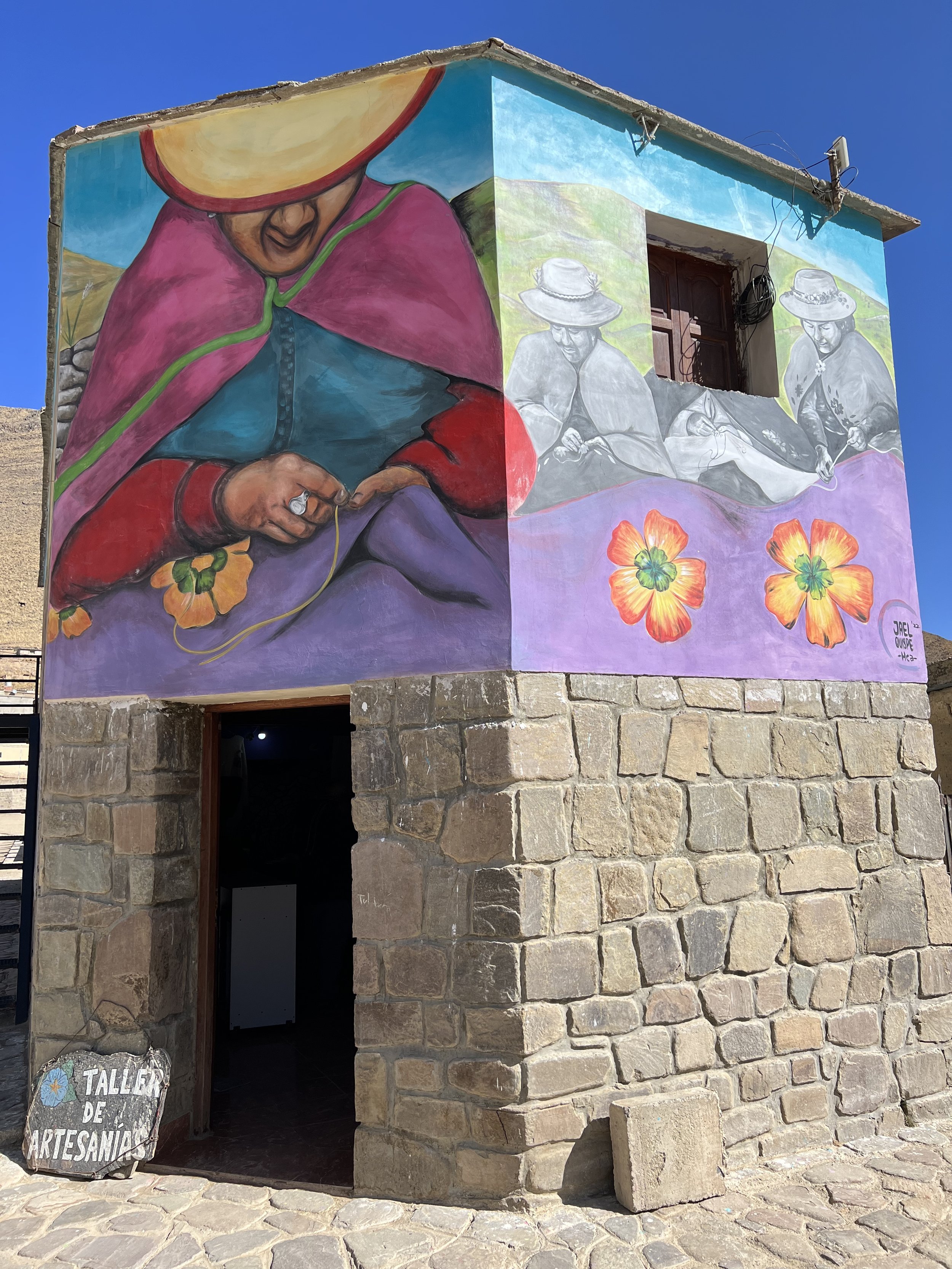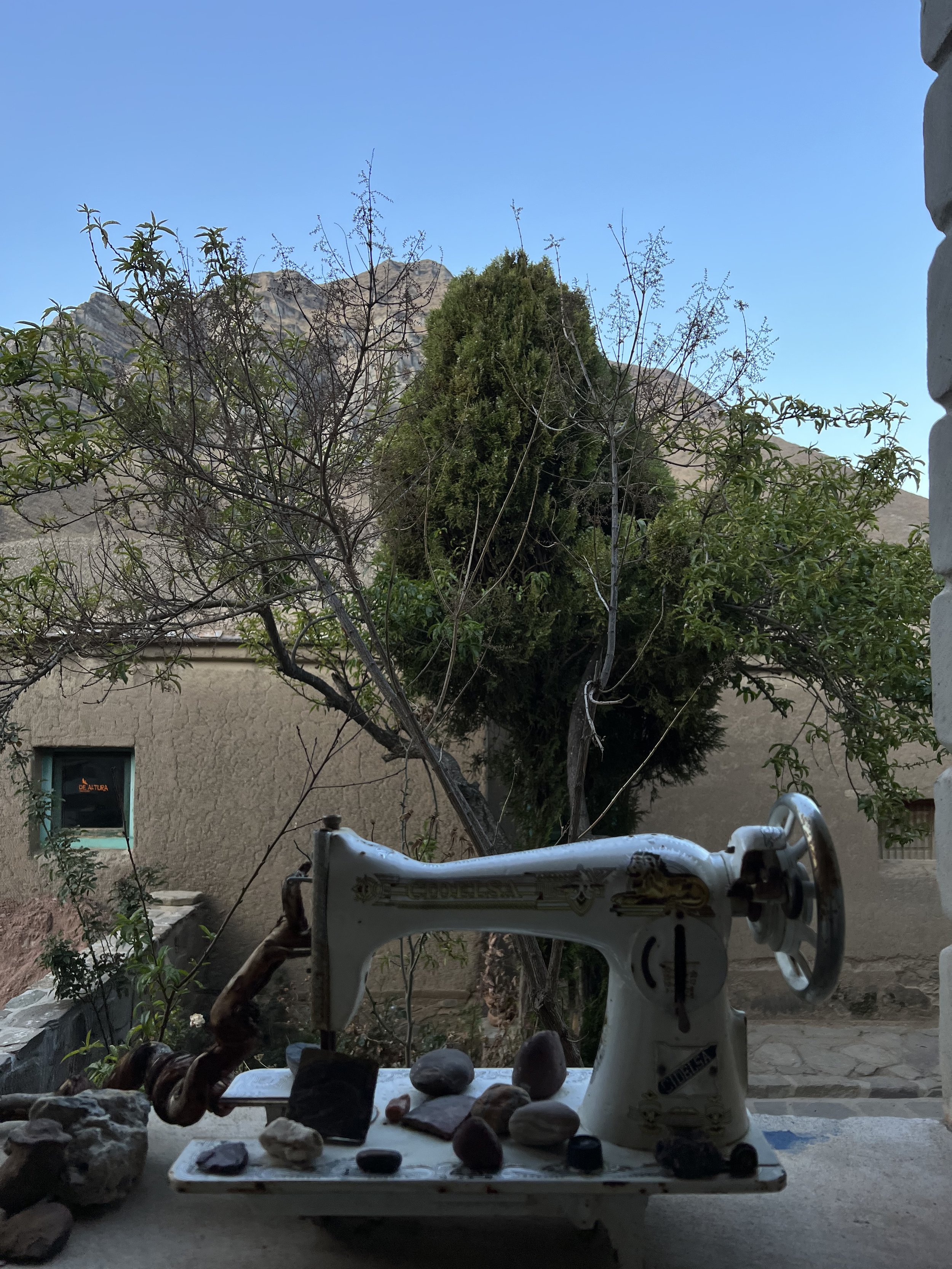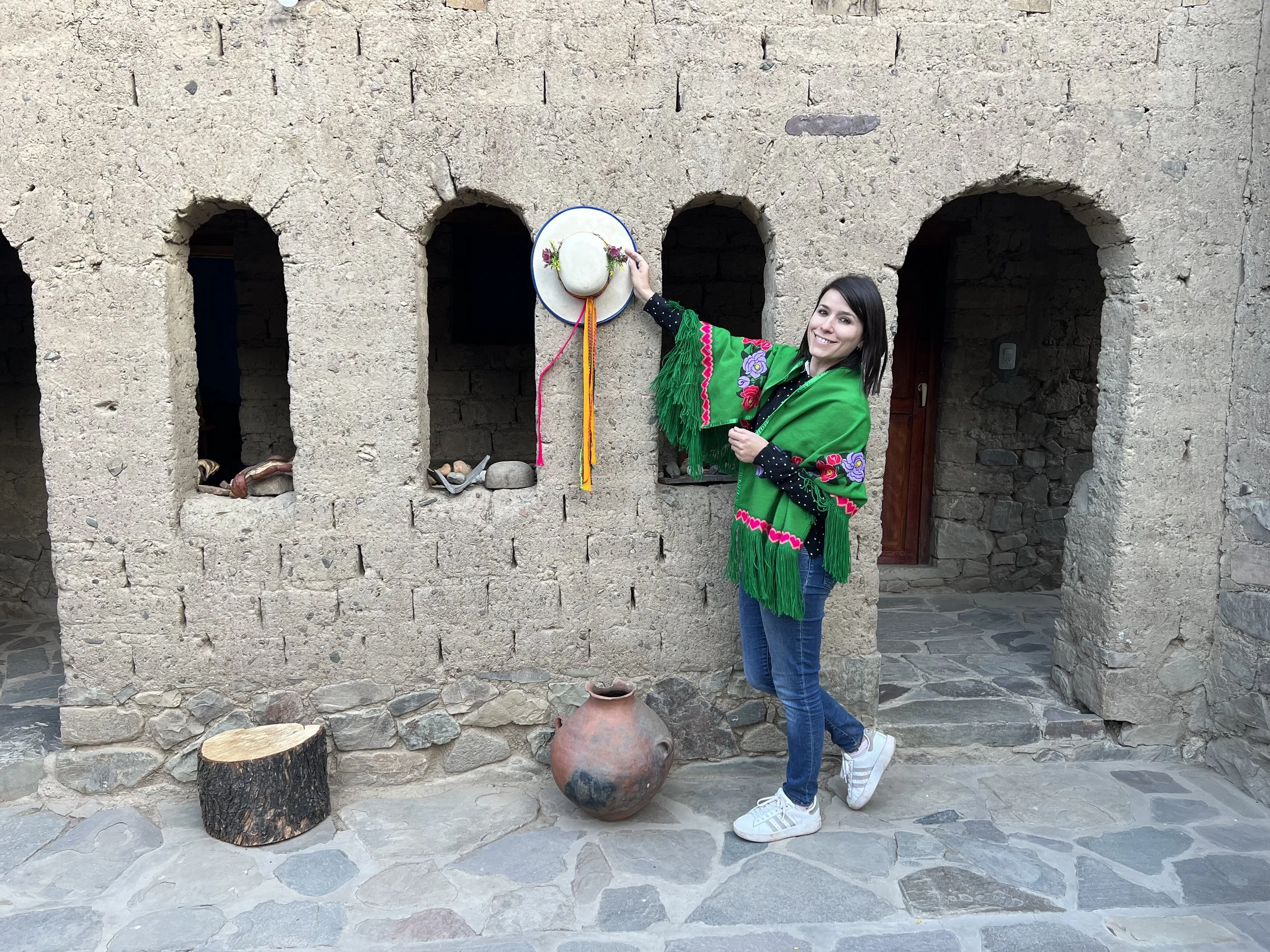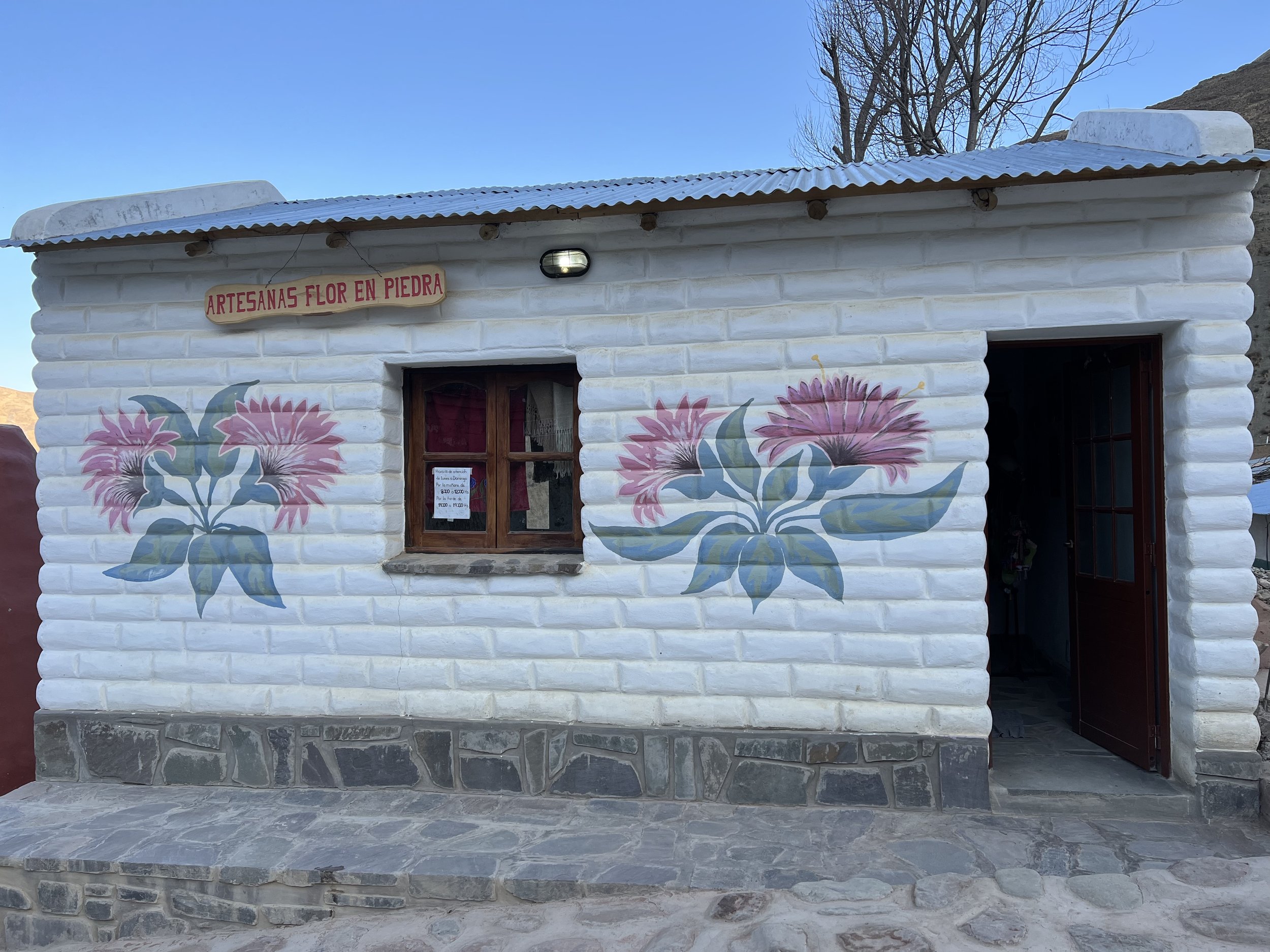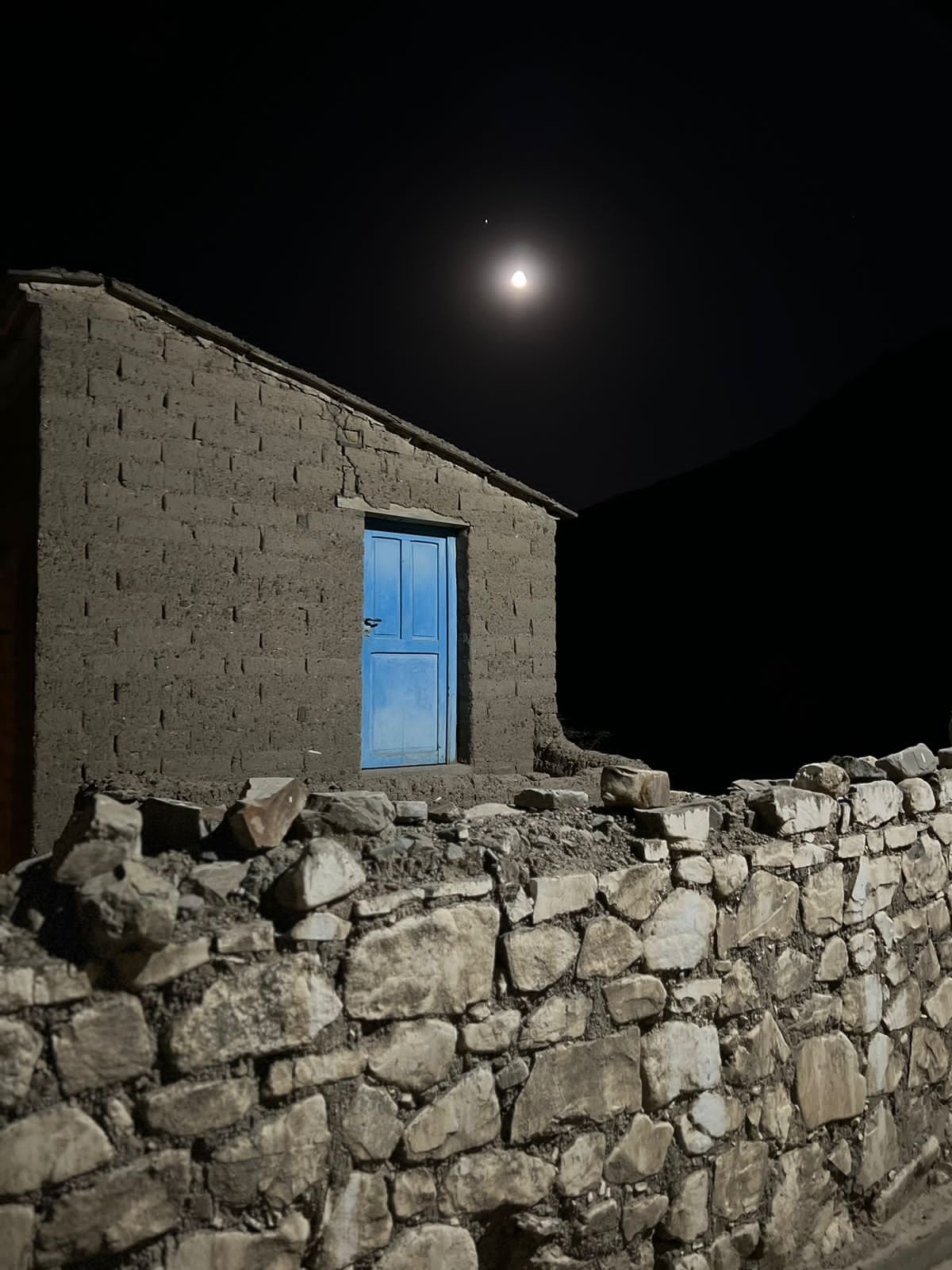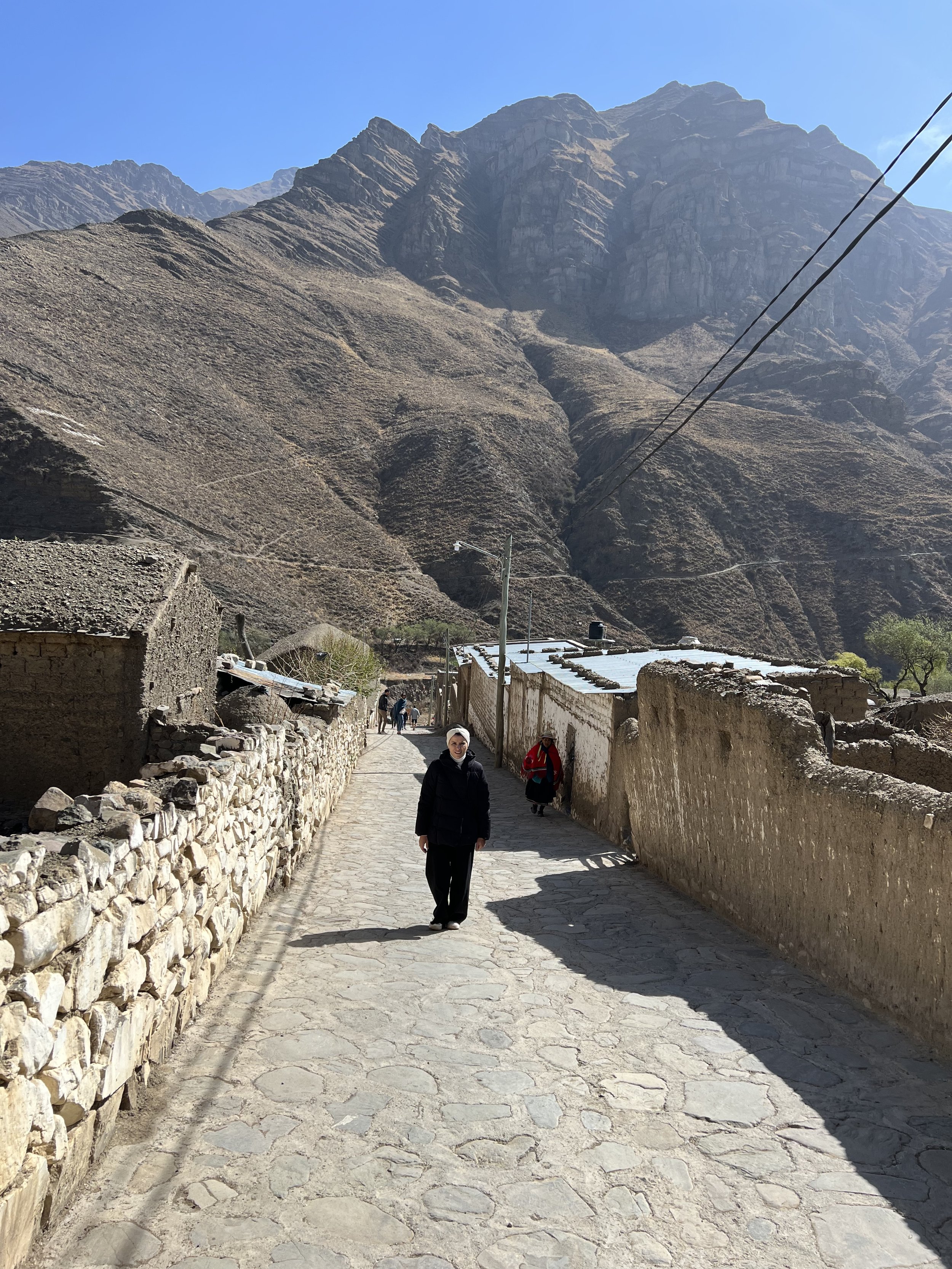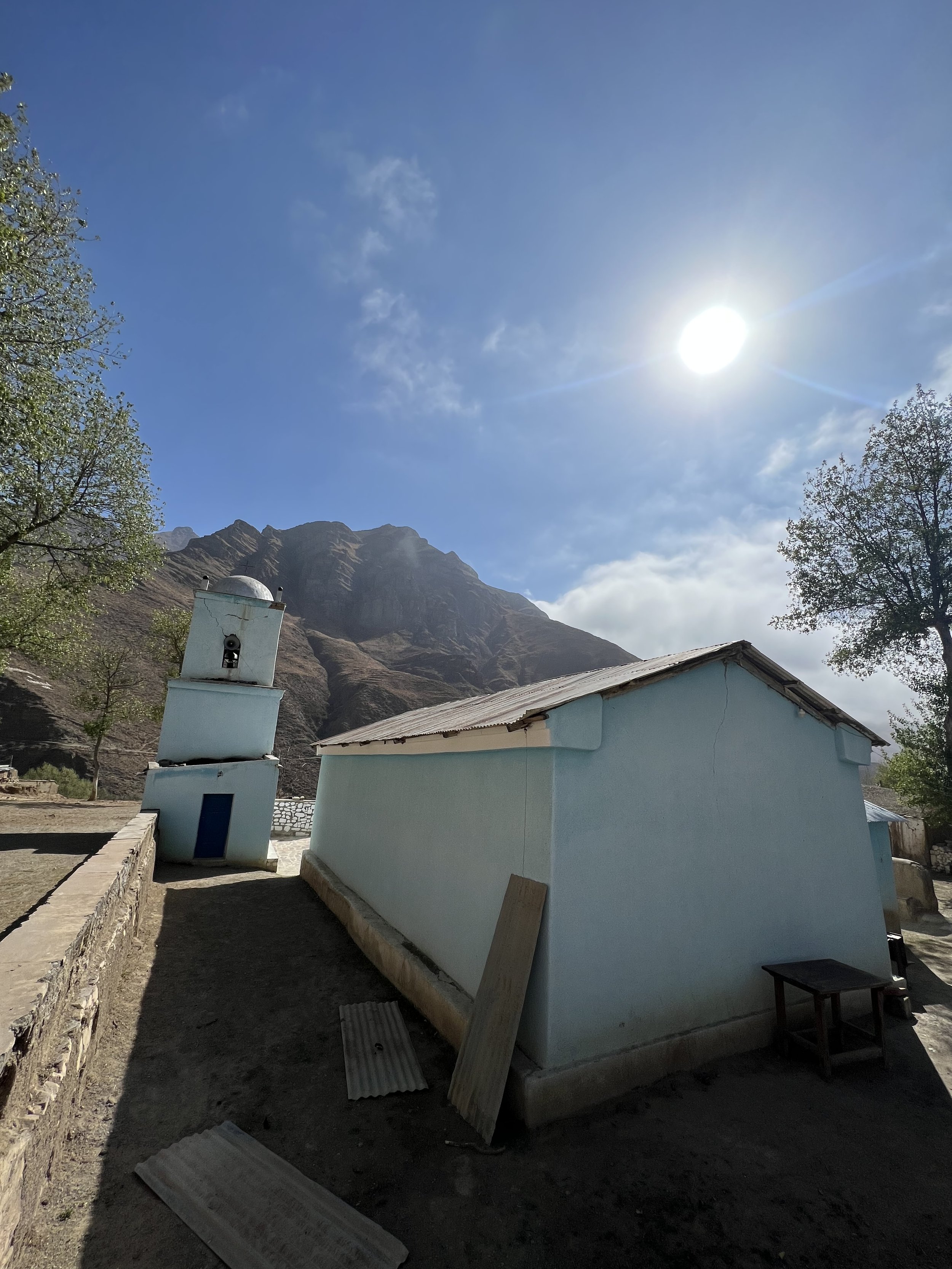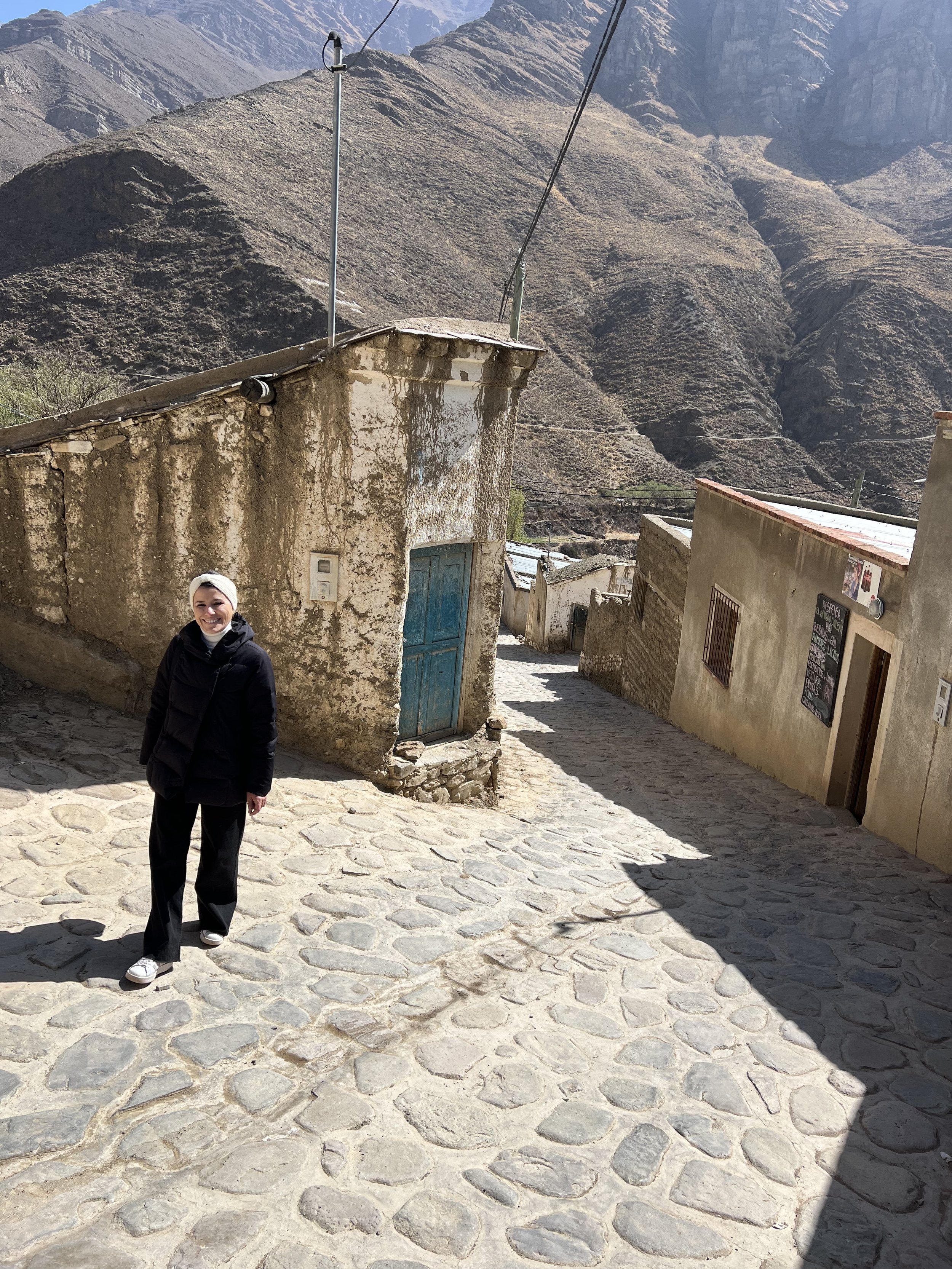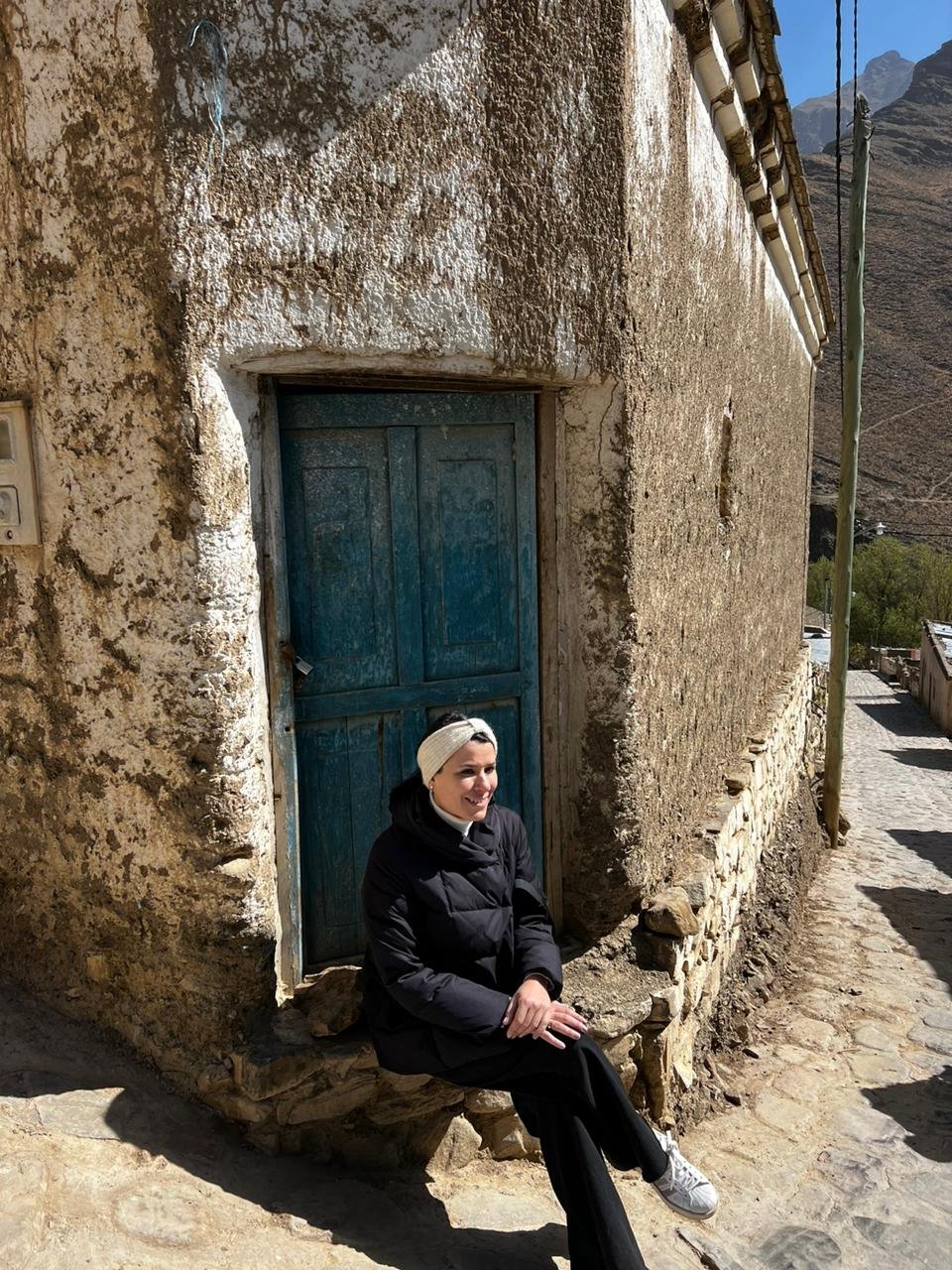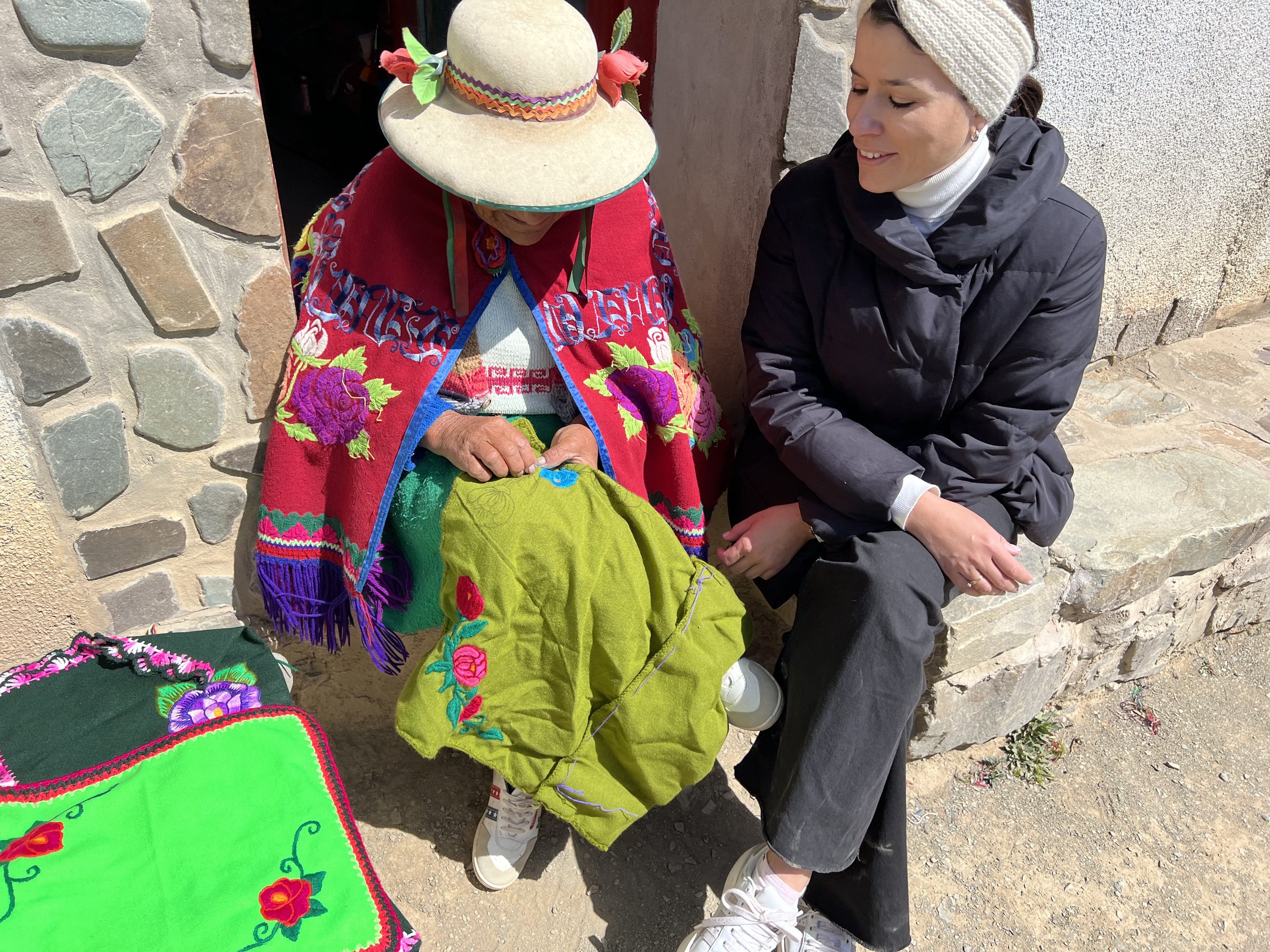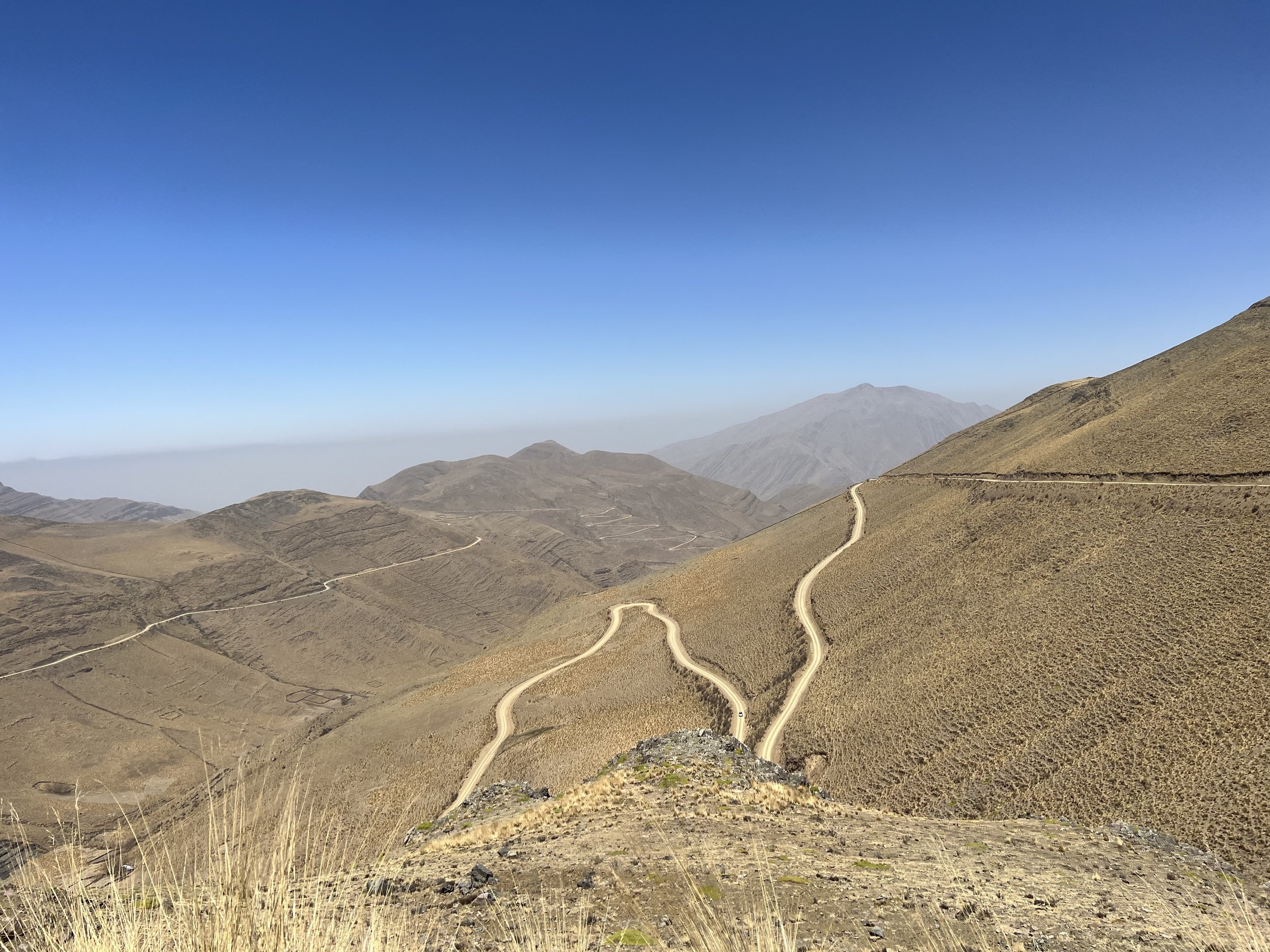Caspalá
Authentic and beautifulGetting to Caspalá feels and is experienced as a great journey that demands time, effort -a lot of it- and courage. For @tripticity_ it was a great achievement.
From the junction of Provincial Route 73 there are about seventy curves on slopes, going up and down, leading to the charming little town in the middle of the high hills.
We left early from San Francisco in the middle of the Jujuy yunga, after visiting the fabulous Termas de Jordán hot springs.
On the way, we were first hitched a ride by a family from Valle Grande. Lucila, nineteen years old, with her little son Iñaki in her arms, came ahead with us. The five other members of the family, carrying the stroller and the chainsaw, jumped into the box of the truck. It was she who told us that they were cutting firewood for the celebration of All Saints' Day, November 1.
We left them at the entrance to Valle Grande, where we had soup, omelettes and cayote jam for lunch, and also bought ketchup from the chilto tomato, the characteristic fruit of a native tree.
It was also a key stop for our friends to fill up with fuel, not from a pump but from jerry cans sold by the small multi-store market located right next to the town's dining room.
To visit a good part of northern Argentina, one must be very attentive to the question of refueling, since not all towns have gas stations.
We then continued on to Valle Colorado, where another local, who was waiting for the bus under the midday sun, asked us to take him to his ranch. Don Antonio's happy face when we agreed to his request, his unforgettable toothless smile made us reflect on the daily life in those inhospitable and distant places. With a single leap he climbed onto the box of the truck and during the whole trip he kept that same smile, in spite of the ups and downs; half an hour later he knocked on the window to let us know that there, in Valle Colorado, his trip was coming to an end. When we got off, he even asked us how much he owed us and after our obvious answer, he left in gratitude. How polite and courteous!
We continued towards Santa Ana, the town that precedes Caspalá. There, we already noticed some of the characteristic landmarks of the culture of these Puna towns.
We were greeted by a young woman wearing the traditional shawl, who asked us to register in the book of the local tourist office. Just in front, a workshop of weavers and embroiderers invited the visitor to have a first approach to the colorful flowered garments.
It was getting late so we continued ready for the zigzags of the remaining trail. The nineteen kilometers from Santa Ana to Caspalá take two hours of slow, steady and careful walking on the mountain slopes.
After crossing the Hornos River and after a steep and very steep climb, you reach the main street of the town; more than a street, an alley, where the color of adobe dresses the small buildings.
Once again it was time to check in at the municipal office in charge of Karina, who told us that in order to stay in Pueblo Viejo, i.e. check in, we first had to leave our bags at the entrance door of our inn -quickly because it implies slowing down the traffic since the narrow street does not allow any other vehicle to pass- and then go up San Martín street for about three hundred meters to the soccer field, which serves both as a parking lot and as a stadium for Club Atlético Caspalá. There all cars must be stored, as the centenary town never imagined the arrival of so many visitors; more than ten cars would collapse the narrow streets.
We followed the instructions as they were given: we clapped our hands at the entrance gate of Pueblo Viejo.
Monica came out to greet us, pointing out the location of the assigned rooms and the corresponding bathroom, all facing the internal courtyard, with galleries of recesses. Some time ago we had made the reservation to her husband, Don Cipriano Quipildor, with the understanding that we had two rooms with private bathrooms each, one for our friends and the other for us. When asked about this matter, Moni, surprised, almost desolate, answered: "Well, yes, it is private for the four of you and has hot water". We thanked her, trying to convey our satisfaction with her welcome and let the detail pass. More relaxed, then, she confessed to us that she will never understand why people want a private bathroom.
These are the situations that turn these adventures of @tripticity_ into real intensive courses of sensitivity, how to absorb -at a stroke- a complete tutorial on coaching, how to feel life in first person, how to embrace it and celebrate and be grateful for all that we are! Simply put, they move and force you to place yourself in time and space, to learn not to take for granted, for obvious, the comforts of everyday life.
On the other side of the small gallery with low ceilings and small arches was the assigned room, which had a comfortable bed with a large quillango (typical northern woven blanket), which would ensure that we would not be cold at night.
Then Moni told us that all those coats were woven by her mother, Doña Julia, who - at one point - appeared clinging to the walls because over the years she lost her sight and hearing.
That was her house all her life, now turned into the visitor's house.
It was getting dark so we quickly went to the neighboring dining room La Cutanita, to make sure we had our dinner.
Doña Hilda waited on us, took her notebook and pencil and -parsimoniously- wrote down our order.
She invited us to come back in an hour, which allowed us to walk about a hundred meters to the main square of the town to enjoy what was intended to be a small snack: an infusion of local herbs and an energizing coffee at Flor de Cardón, the town's coffee shop that has -for the moment- only two tables. Gustavo urged us to try the milk breads with custard made by his partner María. Although it was almost dinner time, we sat down and enjoyed the snack.
Then we headed back to La Cutanita. We knocked on the big gate and Agustín, Hilda's son, served us, placing us at the last available table at 8:20 pm.
The gastronomic sequence went like this: we started with some succulent fried empanadas with cheese, potato, turmeric and cumin, lots of cumin, so much so that the whole dish was an intense yellow color. The main choices were the goat stew and the potato bombs stuffed with cheese accompanied with innovative toasted munitions noodles, a gourmet variation in Caspalá! Of course everything was exquisite.
That night, in absolute silence, in that small adobe room under a reed roof, became forever one of the most unique experiences of @tripticity_, because after finishing cooking Hilda appeared before the diners to interpret her coplas, with box included, and to show us an ancestral instrument typical of many cultures: the mouth harp known in Chile and Argentina as trompo.
The next day, a cold October morning, Cipriano served us breakfast in the narrow arched gallery: an infusion of yuyos and homemade buns. It caught our attention that a little smoke was coming out of the kitchen ceiling so early in the morning. Then, when we asked if Moni had already started cooking for noon, we were told: "no, the water for breakfast is heated with firewood".
A walk through the village followed, passing by the old church and the craftswomen's center. More @tripticity_ could not leave Caspalá without meeting a genuine embroiderer, one of those from other times. That's why we arrived at Facundina's house, right in front of the municipal canchón. In these towns there is no doorbell, so we knocked and knocked and nobody appeared, not even the dog, until from the corner a young man asked us if we were looking for Facundina and told us - pointing out - that she was in the house upstairs, visiting her daughter, because she had gone to get ice.
That implied going up a steep slope, so without hesitation he offered to go and look for her and so he did. At that moment we saw her coming down at full speed to meet us. Short, smiling with her typical colorful attire, she invited us into her garden and unfolding a blanket on a stone, she took out all her artistic production, textiles embroidered in strong colors made by her. She told us that her full name is Primitiva Facundina Coronel and that she liked to be called by her first name.
In fifteen minutes she told us her life story. Simply touching, courageous, outstanding. She had six children, her husband "wasn't good for much", but she still "got her family ahead". In her words, "she was not going to give away" her children because "they were hers", confessing that once they wanted to buy them and she obviously did not accept.
Her education went up to the sixth grade of elementary school and then she dedicated herself to her embroidery, which she prefers very colorful, with many, many colors. We chose some placemats following her advice: one of each color. After shopping, she showed us some of her most characteristic garments such as polleras and rebozos, the typical poncho exclusively for women. It was beautiful to meet Primitiva. Another example of greatness that destiny never tires of giving @tripticiy_.
After that visit we could leave on our way back, having already visited one of the most authentic villages of the region, which was also a post of the Inca Trail, the Qhapaq Ñan, which can be accessed by trekking organized by the locals to the remains of the Old Town.
Caspalá is from another time, as much as its people of an authentic purity. For @tripticity_ it was an emotional life lesson.

